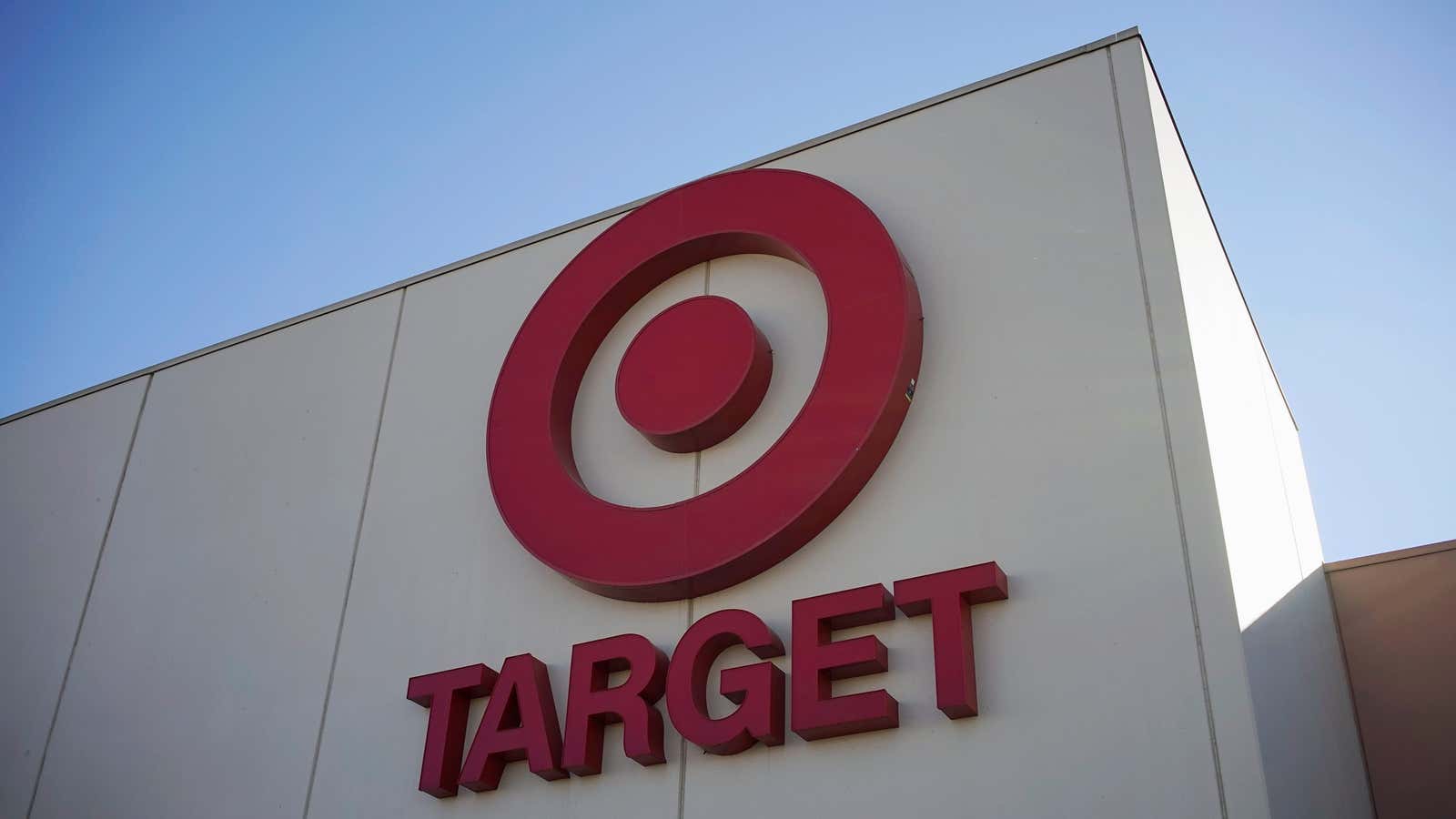A few years back, as Target thought about the future of its digital business, it saw a few possibilities for growing online sales, which it knew would only grow in importance.
Target could have followed the conventional wisdom at the time, which would have entailed building an expensive network of e-commerce fulfillment centers, CEO Brian Cornell said on an earnings call today to discuss the company’s 2020 results. But the economics of this option were terrible, he said, and it didn’t seem scalable. So Target took another route: It focused on making stores the cornerstone of its digital sales, using them as the fulfillment centers for shipping items, or where customers could pick up their online orders if they chose.
In Cornell’s view, that decision—and the work that followed organizing Target’s operations and supply chain to feed stores with inventory—set Target up for the success it experienced during 2020 and the pandemic. In the year ending Jan. 30, the company’s sales grew by more than $15 billion, a sum it boasted in its earnings release was greater than its previous 11 years of growth combined. E-commerce fueled that growth, and stores were its foundation.
Retailers like Target and Walmart became essential destinations in the pandemic for cleaning supplies and groceries, and later home goods and activewear, and stores have been a critical advantage in their battle against Amazon. Target’s nearly 1,900 stores put the retailer within 10 miles of most US consumers, Cornell said, and they were crucial to the nearly $10 billion in online sales Target added in 2020.
Target’s stores help attract online shoppers, too
The prevalence of Target’s stores allow it to offer most shoppers services such as in-store or curbside pickups of online purchases, where a customer can just drive up to collect their order, or same-day deliveries. These services have been popular in the pandemic. In the past year, Target saw a more than 600% increase in curbside-pickup orders and a more than 300% increase in orders via Shipt, the same-day delivery platform it bought in 2017. As a result, Target said in the recent quarter its stores fulfilled 95% of its sales, including in-store purchases, of course, but also orders placed online.
Stores are also crucial to keeping Target’s rising tide of online orders profitable. Maintaining separate warehouses for inventory and shipping items can be expensive for retailers. But John Mulligan, Target’s chief operating officer, said on the call that online orders that customers pick up themselves are about 90% cheaper on average than online orders shipped from a warehouse. In terms of costs, they’re more like in-store purchases. So even as e-commerce grew, Target was able to maintain healthy profits. In 2020, its net earnings rose to nearly $4.4 billion, a 33% increase over the previous year.
Because of the lingering uncertainty from Covid-19, Target didn’t provide a financial outlook for 2021, but it did offer a sense of what it has planned. The company intends to keep opening stores at a rate of 30 to 40 a year, generally focusing on smaller formats. It has its sights on markets such as Los Angeles and New York, as well as near colleges, where customers are on the brink of adulthood and developing their lifelong shopping habits, Mulligan said. They want these shoppers to get used to heading to Target, whether they’re buying in-store or online.
